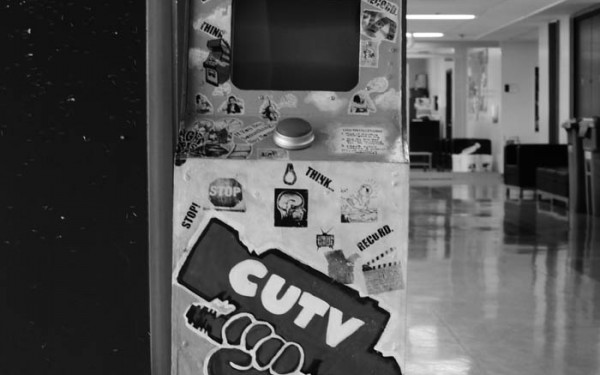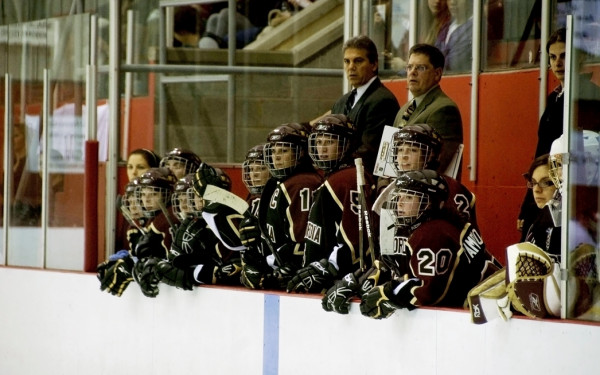CUTV Looking to Attract More Women
Members Hope Soon-to-Debut Bollywood Film Will Help Break Gender Norms
Concordia University Television wants you to know that their doors are open to all.
This article has been updated.
Based out of their offices on Mackay St., CUTV lends their video equipment to students and Montrealers, as well as provide workshops on how to shoot and edit video from Monday through Wednesday.
In 2016, only seven per cent of directors who worked on the top 250 most successful films in the US and Canada were women, while only 17 per cent held other roles behind the camera. The inequality that prevails throughout the film industry makes it difficult and intimidating for many women to break in.
Seema Arora has been working with CUTV since 2008, and through the years she’s said that it hasn’t always been the best environment for young women looking to work in the video production industry. As it used to be a space primarily of men, many women felt intimidated to come in, she said.
But since then, gender parity has become more of a reality. “I definitely see a stronger presence of women,” Arora said. She now estimates that the membership of CUTV is perhaps made up of 40 per cent women and 60 per cent men.
As a member of CUTV’s Board of Directors, Arora has made it her goal to mainly focus on attracting more women into their organization. She’s been able to do so by personally reaching out to women around Concordia and Montreal, by writing scripts with strong female characters and by starting a Facebook page called “Women in Media,” so that she can keep in touch with women around the city.
CUTV’s outreach coordinator Sasha Lipskaia has been aiming to increase women representation as well. She’s been trying to get CUTV to work with more non-profit groups. In the past, they’ve worked in collaboration with Girl Action Foundation, a Montreal-based group that provides funding to programs made by and for women, and has provided coverage on one of their workshops.
Lipskaia has also reached out to the Concordia’s Centre for Gender Advocacy— which she is planning on meeting up with sometime in early April—and with the Simone de Beauvoir Institute who have yet to respond.
“I don’t know if that’s because of the kind of reputation that CUTV has had in the past,” Lipskaia said. “It hasn’t been very easy to connect.”
In the winter of 2012 CUTV reached a peak in popularity due to their coverage of the 2012 tuition hike protests. But the fee-levy group received criticism around campus for having too many external members on their Board of Directors. Two Concordia students had resigned from their positions on the Board, meaning that CUTV was not able to uphold their bylaw which states that the Board needs to have a Concordia student majority.
Lipskaia said she wants to organize workshops over the summer that are aimed at inviting more women so they can share their stories and personal experiences as women. She explained that she wants it to be an open and casual environment, where anyone, whether they are a recent immigrant, a person of colour, or gender nonconforming, can come in and start experimenting with video.
Lipskaia is used to working in the competitive field. “For me, I’m used to it being intimidating, but I don’t think it should be,” she said.
From there, she hopes that CUTV will continue to pursue their goal to become a safer space, where people are able to speak up and ask for help without fear of being disrespected.
“More and more we’re becoming aware that what we hear isn’t acceptable,“ she said, mentioning that in the past, members would occasionally make comments that had sexist and misogynistic undertones. Lipskaia wants CUTV to become a more conscious environment.
As a part of their attempts to branch out, CUTV is currently involved in the production of a Bollywood-inspired film, which is being produced “largely with positions filled by women,” said Arora, who will be directing the movie. Expected to have a four-minute runtime, plans for the short film have been in the works since January 2017.
The choreographer, who is also the main actress, and the sound producer are both women, and most of the cast of the film is as well. The group consists of a mix of students, experienced actors and a cast from various backgrounds.
“Not everyone is Indian in the film. You have people of varying nationalities that are participating, which is really nice,” said Arora.
Filming for the movie will be complete by April 3, and once the editing process has been done the plan is to send the movie off to various film festivals around the world. Arora said that she would target South Asian festivals, dance festivals and local festivals.
She also explained that it’ll likely be made public on their YouTube page by the summer or early fall. In the meantime, she hopes to hold a private screening on campus while she waits for feedback from festivals.
Her advice for young women looking to get into filmmaking and the communications industry: “You just have to take that leap of faith and give it a shot.”
“If you’re interested in film just go for it,” she said. “If you cannot get on a production yourself, because you don’t have experience, create your own content.”
CUTV holds their production meetings every Wednesday night at 5 p.m.
Correction: a previous iteration of this article stated that recently, CUTV did not have a student-majority on their Board of Directors. This has not been the case since 2014. The Link regrets this error.

_900_600_90.jpg)
_600_832_s.png)



_(1)__600_375_90_s_c1.jpg)
__600_375_90_s_c1.jpg)